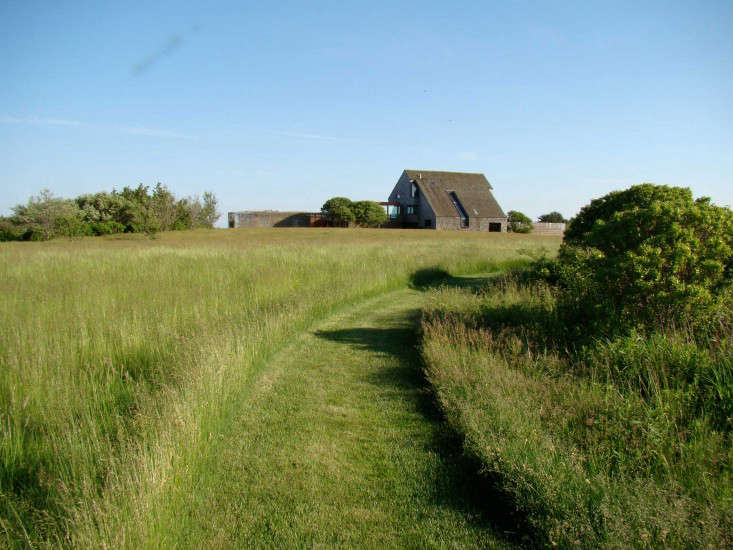Modernist architect Norman Jaffe transformed the landscape of eastern Long Island, introducing sharp-angled, boxy versions of the classic saltbox house to a land of rolling potato fields and dunes.
Sought after for his ability to impose a new vernacular on the classic shingled house, Jaffe at the height of his popularity would famously agree to take on new clients only if their properties were picturesque. His houses, he believed, deserved beautiful backdrops–atop a dune, for instance, overlooking the ocean. Which is where Jaffe sited a 1969 house he designed for real estate developer Stephen Perlbinder and his wife, Sandy.
The only problem is that weather takes a toll. Nearly three decades later, after enduring erosion, floods, angry winds, and a fire caused by a malfunctioning heater, the Perlbinders decided a a grand gesture was in order to save their home from the Atlantic Ocean. So they moved the house 400 feet away from the water, to the middle of a flat cornfield.
In the former cornfield, the backdrop was anything but beautiful. Enter Long Island-based landscape architects LaGuardia Design Group, with a bold plan. The design called for digging up 30,000 cubic yards of dirt to create a new “dune” and to create a 60,000-square-foot manmade pond to fill the cavity left behind by excavation. Today, you’d never suspect that bulldozers deserve the credit:
Photography courtesy of La Guardia Design Group.










For more of our favorite eastern Long Island gardens, see:
- Outbuilding of the Week: A Modern Pool Pavilion in Water Mill.
- Great Gatsby Garden: A Lavish Long Island Estate That Inspired a Movie’s Sets.
- Before & After: Jonathan Adler and Simon Doonan on Shelter Island.








Have a Question or Comment About This Post?
Join the conversation